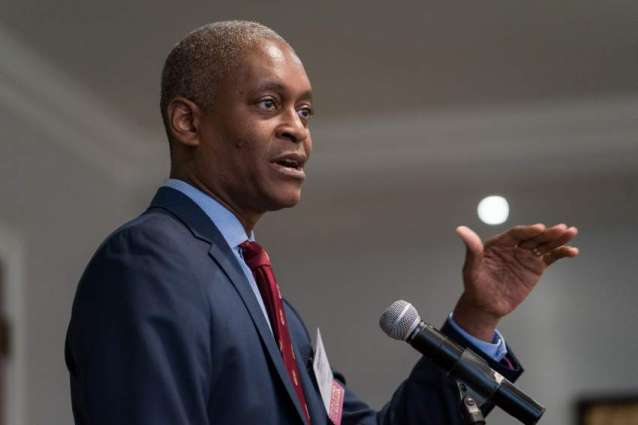US interest rates are likely to stay "restrictive" into next year as wages of Americans are still stronger than expected and could fuel inflation, Raphael Bostic, Federal Reserve chief for the region of Atlanta, said Friday
WASHINGTON (Pakistan Point News / Sputnik - 04th August, 2023) US interest rates are likely to stay "restrictive" into next year as wages of Americans are still stronger than expected and could fuel inflation, Raphael Bostic, Federal Reserve chief for the region of Atlanta, said Friday.
"My outlook is that we'll still be in a restrictive territory well into 2024, and it'll just take a while," Bostic told Bloomberg Television. "It doesn't surprise me that wages are still strong. During this whole high-inflation period, worker wages have trailed inflation for quite some time. And so we're still in that catch-up period, and I expect that we will still see strong wages."
Bostic's remarks came after the Labor Department reported on Friday that the US economy added 187,000 jobs in July, the smallest expansion of its kind in 2-� years, as the Fed neared in its goal of bringing inflation back to levels that existed before the outbreak of the coronavirus pandemic in 2020.
The Fed has identified runaway jobs growth and correspondingly higher wages as among reasons for inflation hitting 40-year highs of more than 9% a year in June 2022, from a pre-pandemic rate of around 2% in 2019. Last month, inflation hovered at 3% per annum.
But while June's jobs growth itself was encouragingly smaller compared with May's expansion of 306,000, wages were still higher than what the central bank desired.
Average hourly earnings grew 4.4% year-on-year in June versus a projected 4.2%, the Labor Department said. The Fed says non-stop wage growth since the pandemic has enabled Americans to spend more than before. That, and trillions of dollars of pandemic relief spending by the government, led to runaway inflation between late 2021 and middle of last year.
The Fed, in response, has added a total of 5.25% since March 2022 to key lending rates, which previously stood at just 0.25%.




